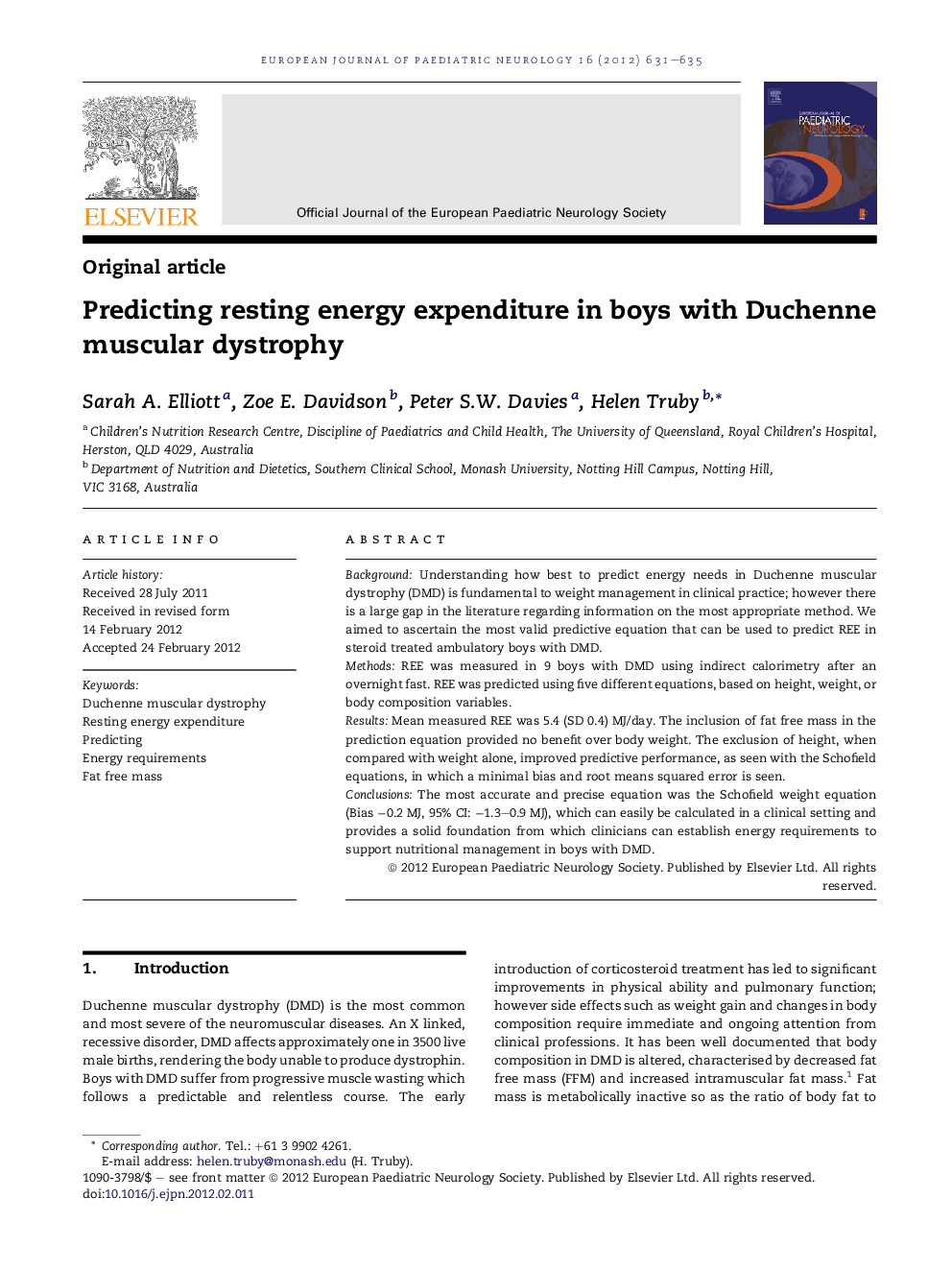| Article ID | Journal | Published Year | Pages | File Type |
|---|---|---|---|---|
| 3053903 | European Journal of Paediatric Neurology | 2012 | 5 Pages |
BackgroundUnderstanding how best to predict energy needs in Duchenne muscular dystrophy (DMD) is fundamental to weight management in clinical practice; however there is a large gap in the literature regarding information on the most appropriate method. We aimed to ascertain the most valid predictive equation that can be used to predict REE in steroid treated ambulatory boys with DMD.MethodsREE was measured in 9 boys with DMD using indirect calorimetry after an overnight fast. REE was predicted using five different equations, based on height, weight, or body composition variables.ResultsMean measured REE was 5.4 (SD 0.4) MJ/day. The inclusion of fat free mass in the prediction equation provided no benefit over body weight. The exclusion of height, when compared with weight alone, improved predictive performance, as seen with the Schofield equations, in which a minimal bias and root means squared error is seen.ConclusionsThe most accurate and precise equation was the Schofield weight equation (Bias −0.2 MJ, 95% CI: −1.3–0.9 MJ), which can easily be calculated in a clinical setting and provides a solid foundation from which clinicians can establish energy requirements to support nutritional management in boys with DMD.
